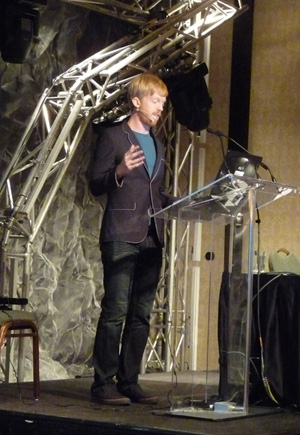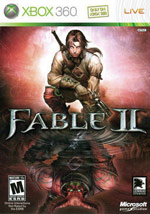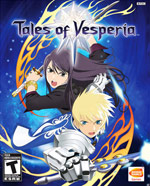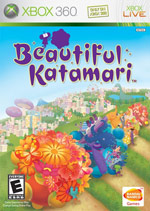Montreal International Game Summit 2010
In November 2010 it took place another edition of the Montreal International Game Summit, and it was a great event.
There was a good variation of talks covering different aspects of gaming:
- The first keynote was Ed Fries who gave a very inspiring, motivating talk on the beauty achieved through constrains. He started with a metaphor between the evolution of ancient base crafting and the game industry, he pointed out how the limitations in the crafting were setting the foundation of styles in the production of such beautiful pieces. The key point is that for creating beauty it is necessary to understand the limitations of the medium. In order to exemplify how comprehending limitations are critical for producing games, he showed his own work “Halo 2600”(click on the link to play it). It’s a version of Halo that he wrote for running on an Atari 2600.
- Greg Boyd is an attorney who specializes in the digital media field. He gave a presentation on intellectual property, trademarks, and copyrights; neat content about how to protect your content, when to use and not to use others’ material. He even condensed the info into a chart, and he would smack anyone who would yawn during the lecture. Even after such announcement, someone yawn :-O
- I’m an avid RTS player, and there is an upcoming game that promises to challenge how RTSs are played: Achron. The new aspect that this game brings is time travelling, yes, time travel in an RTS game. That’s twisted! Chris Hazard gave a talk on mathematical aspects on balancing games while keeping in mind that the game still have to be fun.
- Andrée-Anne Boisvert from Ubisoft Quebec on gave a talk on playtesting. She explained the importance of in-house playtesting, and quick turn-around to the development team. They employed the concept of persona to define a fictional end user, and rapid playtest with only 1 or 2 objectives; this approach helps to keep the focus on the most urgent matters, and refresh updates with the new data. Playtesting is done by the usability people themselves or others (developers, tester, end users), the number of ‘testers’ is kept low for fast data processing, and because for usability purposes 5 participants are enough for identifying usability problems (see Nielsen). The problems identified are hypothesis that are confirmed or rejected.
- With all the buzz around Kinect, Ryan Challinor from Harmonix presented the UI adventure they went through for the game “Dance Central”. It was really interesting to hear how UI designers working on Kinect products need to change the way they assumed people interact with devices. The gestural input changes a lot of the assumed rules. “Pushing air doesn’t feel good”. The UI work at Harmonix dealt with menu navigation, list of song, and selections. They also have the challenge of working with a new device that was still under development, thus glichty. Ryan showed different prototypes of the UI, pointing out to strength and weaknesses of each iteration.
- Todd Northcutt from Gamespy talked about leaderboards and (pretty much) how you feel about you position on the leaderboards ;) He covered how ‘high scores’ were actually a local competition, for instance at the arcades or your family early consoles. At home you would know and recognize whose those three letters were, and that was an incentive to beat your brother, your cousin or the neighbour. With the pass of time and the millions of gamers, some leaderboards became absurd: you’re # 3,526,489! :-/ So, the point is how leaderboards are changing to be meaningful again, which is going back to its origins. For instance, in StarCraft your rank is segmented into small clusters with people or similar skills, you can make your way through the ladder. Other strategies involve to track multiple aspect of the player, for instance areas explored, guns own, skills levels, pets collected, etc, the idea is that then you can have multiple leaderboards on multiple aspects, and users have more chances of being first at something. It sounds a little bit cruel but it’s the true. We want to be number one, at something, at anything! So, it’s a way of giving recognition to players on diverse aspects of the game. Another leaderboard trend is to provide context, such as a leaderboard of only your friends, or of those in your same physical location (this is again going back to the origins), those who you know, which increases your interest on the leaderboard, and your desire to beat them! Lastly, Todd mentioned that leaderboards shouldn’t be kept forever, they need to be flushed out to keep the competition fresh.
- I presented the work done at Electronic Arts on user experience using psychophysiological techniques. Using sensors that measure facial muscle activity and galvanic skin response, it is possible to translate the data into emotions. Plus, by employing eye tracking, you can see where players look at on the screen.
As you’ve read the summit had different interesting talks, there was also an expo floor.
Montreal is an outstanding city. It’s amazing from multiple points of view: culturally alive, great public transport, friendly locals, excellent food, and a motivated game industry. You can’t go wrong with Montreal!
PAX 2010
Last week I went to the Penny Arcade eXpo (PAX 2010) which is a fest for the gaming lovers. It was a great trip!
PAX lasted three day (Friday, Saturday, and Sunday), there were talks, panels, workshops, rooms for gaming, and the expo floor where hundreds of companies were featuring their latest games. All this took place in Seattle, Washington, USA.
 PAX banner by the convention center
PAX banner by the convention center
PAX ’10 sold out all badges a couple of weeks before the event, and it was indeed very crowded. People would queue for hours in order to have a spot for the keynote, or play one of the hottest games. Talking with other PAX attendees who have been at several PAX editions, it was noticed that the number of people have rocketed. The Washington Convention Center seemed small for all the flocks swarming the floors. The ‘big’ events such as keynote, concert, and closing ceremony happened at the Benaroya Hall but there was not enough space for all the PAX attendees, and a lot of people were left out. It seems that PAX organizers need to resolve the ratio of people-available space.
Benaroya Hall
Panels and talks covered different topics, always leaving time for Q&A which made things more dynamic, hearing the avid geeks’ thoughts and creating a more intimate atmosphere. From all the panesl, I’ll highlight “We Study Games…Professionally: Academic Research and Game Studies”. I was really happy that such panel took place at PAX. Christopher Paul (Seattle University), Mark Chen (University of Washington), Nathan Dutton (Ohio University), Todd Harper (Ohio University), and Shawna Kelly (University of Southern California) presented on overview of their work and talked about how the game studies field is evolving. The room was completely full, and people were eager to know more about how studying games works.
Volunteers at PAX kind, cheerful and willing to help, they are called “Enforcers” which makes things even more hilarious. Wearing kilts was quite popular at PAX.

The expo floor was full of games ready to be played (plus your willingness for queuing), demos were also given often, flashy lights and music. It is a truly a never-ending source of data for us, the game user experience folks. It was really interesting to see how fast or slow people would pick up a game and be able to start playing, if they would stay there until the exhibition staff will kick them out or if they would sneak out while trying to be polite. I’ve to run a study there next year!
The final for the Omegathon was duelled with the Claw, a very exciting ending. :)
Personality and Games
Can personality give information about the games you like?
Is your personality playing a role when it comes to choose what games you prefer?
Would people with different personalities prefer different games? If so, which games?
These are the questions that the work “Gamers’ Personality and Their Gaming Preferences” answers.
This work explores that people with certain personality traits would prefer certain video game genres. The motivation is to contribute to demographic game design by identifying gamers’ personality profiles in order to better satisfy their needs and enjoyment. A Gaming Preferences Questionnaire was developed and validated to identify gamers’ preferences. The NEO-FFI questionnaire based on the Five Factor model was selected for measuring gamers’ personality traits.
Data from 545 participants was analyzed by multiple linear regression. Eight game genre models were found statistically significant, and accounted for 2.6% to 7.5% of gamers’ preferences for game genres based on personality factors. The relevant personality traits of the models matched game elements of the genre. This work shows that a refined itemization helps to begin to understand the psychological human complexity that drives players’ preferences.
Keywords: personality; game elements; game preference; genre; demographic game design.
Scouts and Gaming
As a person who has been part of the Scout movement and is part of the gaming research community, I’m really excited to see that the Boy Scouts of America have added the video game badge.
This is a great step towards de-demonizing the video game activity by youth. I believe that it’ll help to educate parents and other adults on games since they have to be involved in the some of the requirements to get the badge. It’ll bring for sure more awareness about selecting games and how they fit kids’ life.
Here are the requirements as they appear in the official site of Scouts of America:
Belt Loop
Complete these three requirements:
- Explain why it is important to have a rating system for video games. Check your video games to be sure they are right for your age.
- With an adult, create a schedule for you to do things that includes your chores, homework, and video gaming. Do your best to follow this schedule.
- Learn to play a new video game that is approved by your parent, guardian, or teacher.
Earn the Video Games belt loop and complete five of the following requirements:
 Academics Pin
Academics Pin
- With your parents, create a plan to buy a video game that is right for your age group.
- Compare two game systems (for example, Microsoft Xbox, Sony PlayStation, Nintendo Wii, and so on). Explain some of the differences between the two. List good reasons to purchase or use a game system.
- Play a video game with family members in a family tournament.
- Teach an adult or a friend how to play a video game.
- List at least five tips that would help someone who was learning how to play your favorite video game.
- Play an appropriate video game with a friend for one hour.
- Play a video game that will help you practice your math, spelling, or another skill that helps you in your schoolwork.
- Choose a game you might like to purchase. Compare the price for this game at three different stores. Decide which store has the best deal. In your decision, be sure to consider things like the store return policy and manufacturer’s warranty.
- With an adult’s supervision, install a gaming system.
Game User Research Summit (GUR)
San Francisco, CA, USA – The 1st Game User Research (GUR) Summit was on March 10th 2010, and it was awesome. The objective of this summit was to gather user-research professionals who work in the games industry, and share experience, knowledge and techniques.
GUR summit started with an update of the group by David Tisserand and Bill Fulton. The Games User Research Special Interest Group (SIG) has been created as part of the International Game Developers Association (IGDA), there is a provisional board and the group is taking shape and organization.

There were presentations covering current practices:
Graham McAllister talked about ‘Promoting UX: Educating the Video Game Industry on User Research’, he nicely tackled an array of common statements and misunderstandings when people in the game industry are faced to user research, for example from “We don’t need it”, passing through “Our game isn’t ready”, to “We do this”.
Bill Fulton’s ‘From 0 to 35 in 7 years: scaling up a games user-research group’ was a neat presentation on his experience at Microsoft Game Studios and how he managed to get an user research team growing. Once upon a time (circa 1997), there was only Bill as a contractor at Microsoft Game Studios. He highlighted three aspects for growth:
1) Focus user research resources to maximize product improvement: how to impact the return-on-investment (ROI), to recognize limits, to be efficient, to have visible success.
2) Do UR in a way that generates more demand for UR: deliver high-quality, acknowledge and optimize the time of the development team, and stay in communication with them.
3) Have the right people :) by rigorous hiring process, and investing in your people.
Dmitri Williams from the University of Southern California presented his work on online games and how he harvests information. A lot of the analysis is done with a tool called Katana Analytics Engine.
Bruce Phillips showed us the amazing work he’s been doing on player experience using behavioral data at Microsoft Game Studios. The fascinating idea of keeping track of what people do with their XBox live games while players are comfy at their homes. They remotely track data to understand better what happen with the game after is shipped.
I presented the work that we, Veronica Zammitto, Magy Seif El-Nasr and Paul Newton, are doing at Electronic Arts. We are looking at game user experience on sports games by employing psychophysiological techniques and telemetry data. We used eye tracking, EMG, HR, GSC to identify the emotional profile of the player.
Ben Weedon talked about the work done at Playable Games. First, he showed us how fun and challenging getting feedback from kids can be. Later, he explained the process of international user research and how many things have to be taken into account in order to run smooth sessions for collecting data, for instance just to mentioned a few, the cultural differences and legislation about recording information, power supplies, local translators/facilitators even if you speak the same language, having local assistants.
Carla Fisher also works with kids. She shared a chart that leads the comments and annotation when kids try her hand-held device games.
Heather Desurvire is a consultant at Behavioristics and faculty at the University of Southern California. She explained game accessibility principles (GAP), a way of evaluating and designing games, and how that can be applied to game tutorials.
GUR summit was a great event that strengthened the game industry user research community.
Sports and HCI
Little did we know about sport from the human computer interaction field. Actually, we know very little.
Genevieve Bell, Director of the User Experience Group at Intel and keynote speaker at CHI 2010, points out the lack of research about sports and technology.
It seems that it’s a really good timing to be doing work in game user experience on sports game :)
Excerpts from her talk:
“Sports is a huge money maker, it’s a huge driver of new technology adoption.
40% of Americans when asked why they upgraded to HD, the answer was that sports look better on it.
Sports drive new technologies of production in video capture, in dealing with multiple streams of content, and now is one of the drivers of 3D.
Yet there are less than 40 papers written over the last 20 years in HCI about sports. And most of them are written about things that are not really sports, they are written about roller coasters, about going on around on motocross in Scandinavia and there is one about going to a Canadian stadium, and that’s it.
[Sports] is a critical domain of human activity, it schedules time and space and we are not writing about it.”
User Experience in Gaming grant Announcement
Dr. Magy Seif El-Nasr (SIAT Assistant Professor) along with her future PhD student Veronica Zammitto (currently SIAT Master’s student) have received funding from MITACS in the amount of $15,000 to support Veronica working as an intern at Electronic Arts Canada (EA). The overall goal of the study is to look at user experience methods for evaluating sports games. Different techniques will be explored in terms of their efficiency, ability to automate them, and their value to the EA team.
Pure Game
We tried Pure on the Xbox 360, produced by Black Rock Studio and published by Disney Interactive Studios. Pure is an off-road racing ATV video game where you do a lot of tricks.
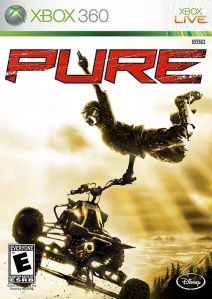
The tutorial is pretty short and straight forward. You have to proof that you can do four things:
- Complete a lap
- Preload, prepare yourself to make a jump.
- Trick
- Boost, get speed for getting more room for longer tricks.
The voice-off tells you what to press, waits for you, and if you fail it’ll repeat the instructions again. If you suck, it’ll start annoying you by pausing the pausing the game. In fact this will happen a lot during the game as well, you know what you have to do, you’re working on that but that voice is going to drill your head.
A really nice detail is the aesthetic for depicting the controller when showing the buttons, it is covered with dirt, as if you’d been riding on it.
You can build your own ATV, selecting the parts that you want, getting one for speeding or other for tricks. The customization is pretty good. The in-game advertising is in full here, you have a lot of brands to choose from, for instance Elka, Fox, Ohlins, Maxxis, DG, ITP, just to name a few. You can put decals of them when stylising your vehicle. After all those decisions, the tougher one is to name your ATV.
Although you have a lot of choices for your ATV, it doesn’t happen the same when choosing your avatar. You can’t be you, you have to choose from a predefine selection that points to generic populations, a California boy and girl, a latino/a, UK, Japanese. I believe that the stronger connection that you can get is through the ATV rather than the avatar but, only Lord knows why, your avatar is quite intrusive will riding. S/he will turn back to yell something to you, I’ve found that pretty disruptive, breaking my immersion. I prefer when it just cheers or says something when facing forward, and ideally less often.
The sweet part of this game is doing tricks. That’s the game element that makes it different from just a racing game. You’re going fast on those versatile vehicles, you hit slopes to jump and while in the air you show up your awesome skills by doing trick, such as from stretching a leg to the side to a sequence of contortions in a dance with your ATV. This is the challenge. When you do tricks, you get “Thrill”, more thrill you get, cooler trick you can do. As you fill up the thrill bar, it enables from basic jumps (A button) to intermediate (B) and expert (Y). Expert tricks require more time hence your jump has to leave enough space for kicking around.
Time is another element that takes place, your ‘thrill bar’ will start going down if you don’t keep doing tricks. Another way of consuming ‘thrill’ is by boosting to get more speed and consequently higher jumps, so it makes a balance of boost-jumps.
Performing different tricks is better but is not clear which tricks you’ve done so far, the system could offer a way of remembering what’s been done or prompting for certain tricks to do. Since the tricks are related to the left stick position, I try to do the mental note of going clockwise.
Foundations of Digital Games – (and the Great Idea of Having a Game Conference on a Cruise)
I attended Fourth International Conference on the Foundations of Digital Games (FDG’09). In a nutshell, it was great, and it fulfilled the crossover between academics and industry, covering topics from both social and computer sciences.
FGD’09 had a nice variety of type of session and topics. There were panels on game curriculum and grant opportunities, stressing how important is to create archives of successful and unsuccessful applications. There were tutorials for programming. There were presentations on both technical aspects and social aspects. It’s definitely a conference that worth going.
One of the features of this conference that I’d like to highlight was the fact that the conference happened on a cruise. Yes, one of those massive boats soaring the ocean. It departed from Port Canaveral and one of the ports of call was Nassau (Bahamas).

The FDG'09 Venue
Beside how exotic this could sound, I have to emphasize the convenience of having a conference on a cruise: you don’t have the hassle of having to find a hotel near the venue (but not out of budget) because your room it’s at the venue! You don’t have the problems of ‘where-to-eat’ or not having time to eat because it’s all inclusive! This also simplifies numbers if you have a per diem arrangement with your organization. You won’t be late, you won’t mind staying late, your room is just on the other floor! It provides more chances to comingle with other attendees, helping to establish a camaraderie spirit for the conference. You can have breakfast, dinner, coffee or a drink with your network really easily!
After all these reason, I strongly advocate for having more conference on cruises.

